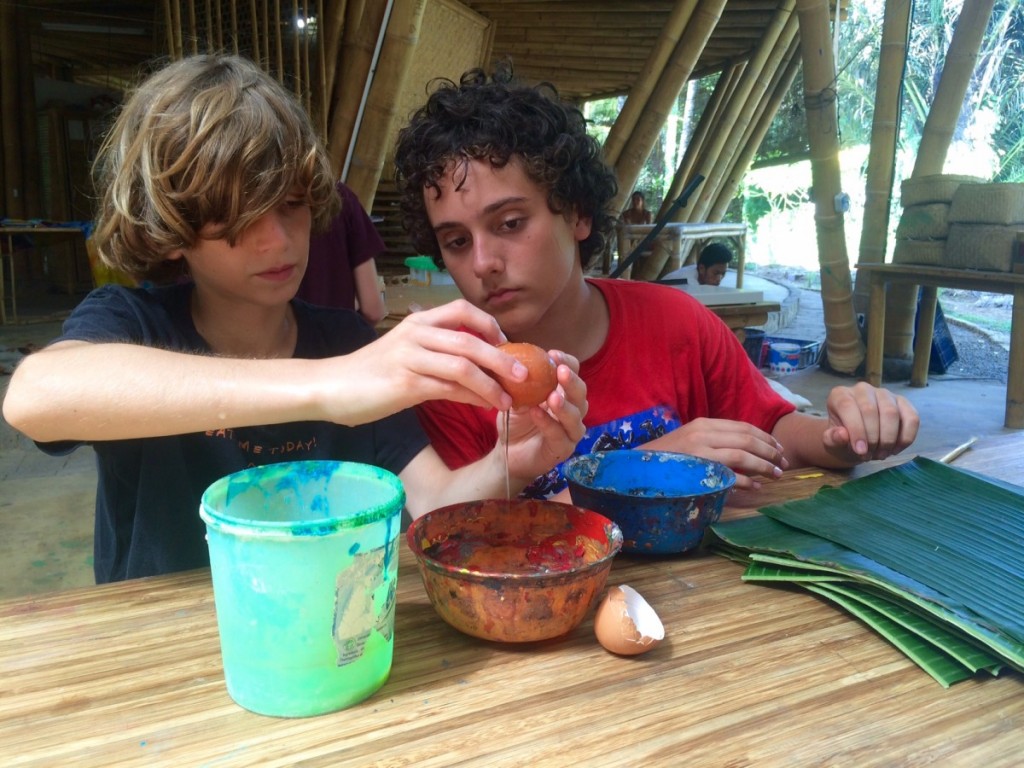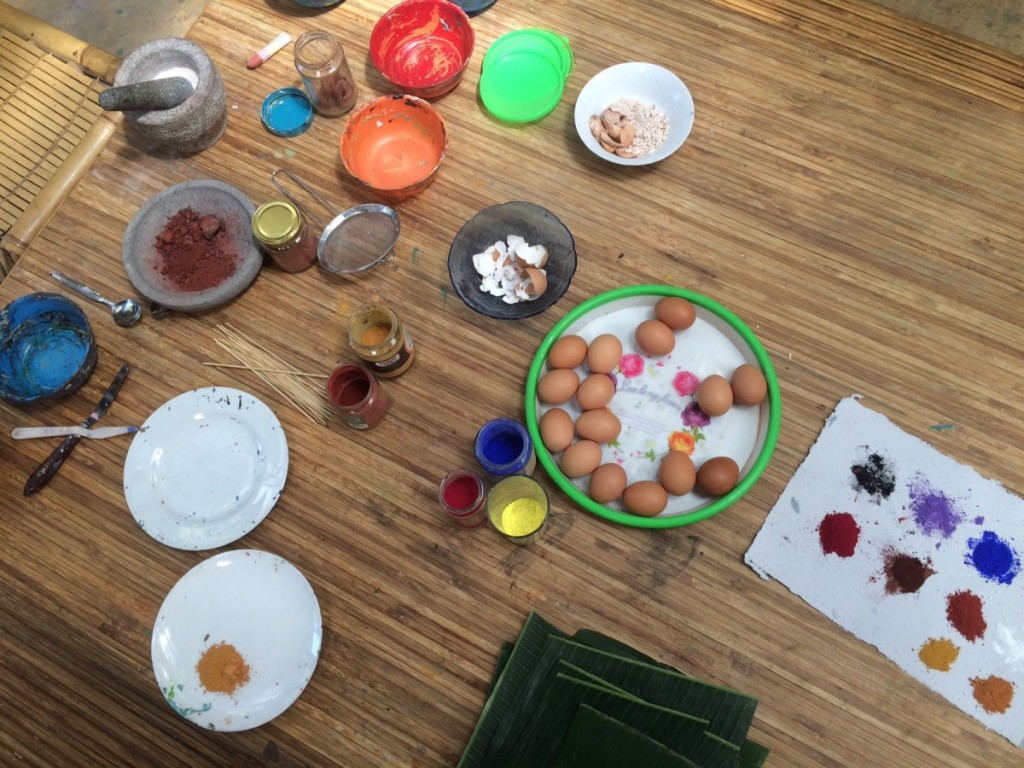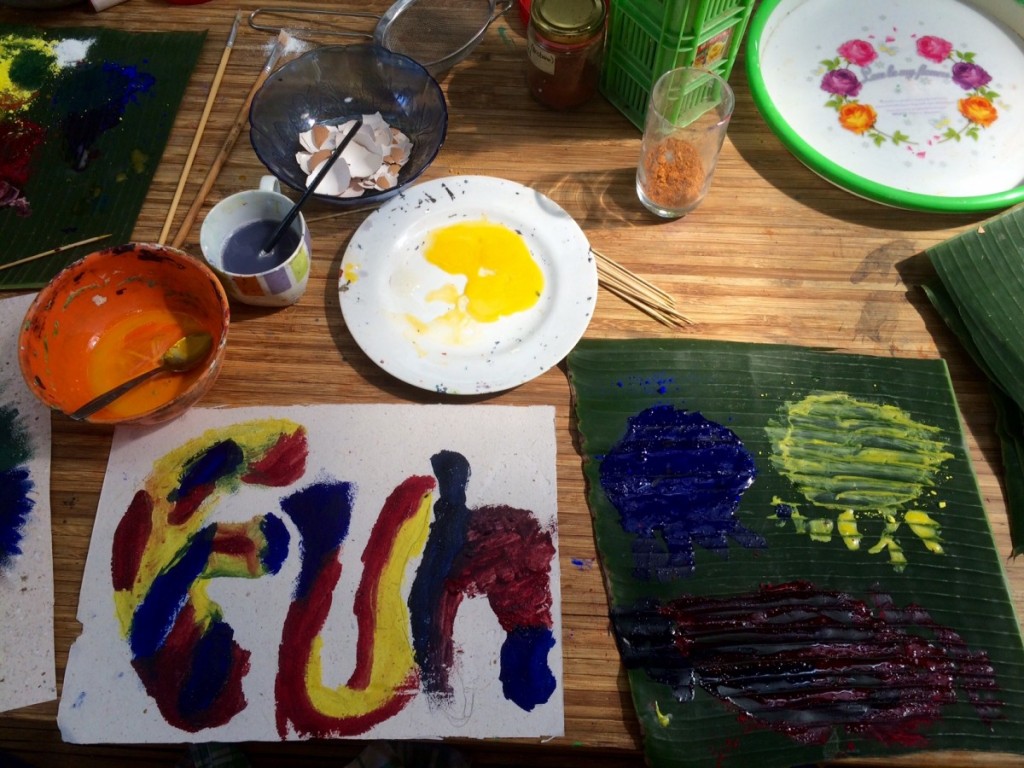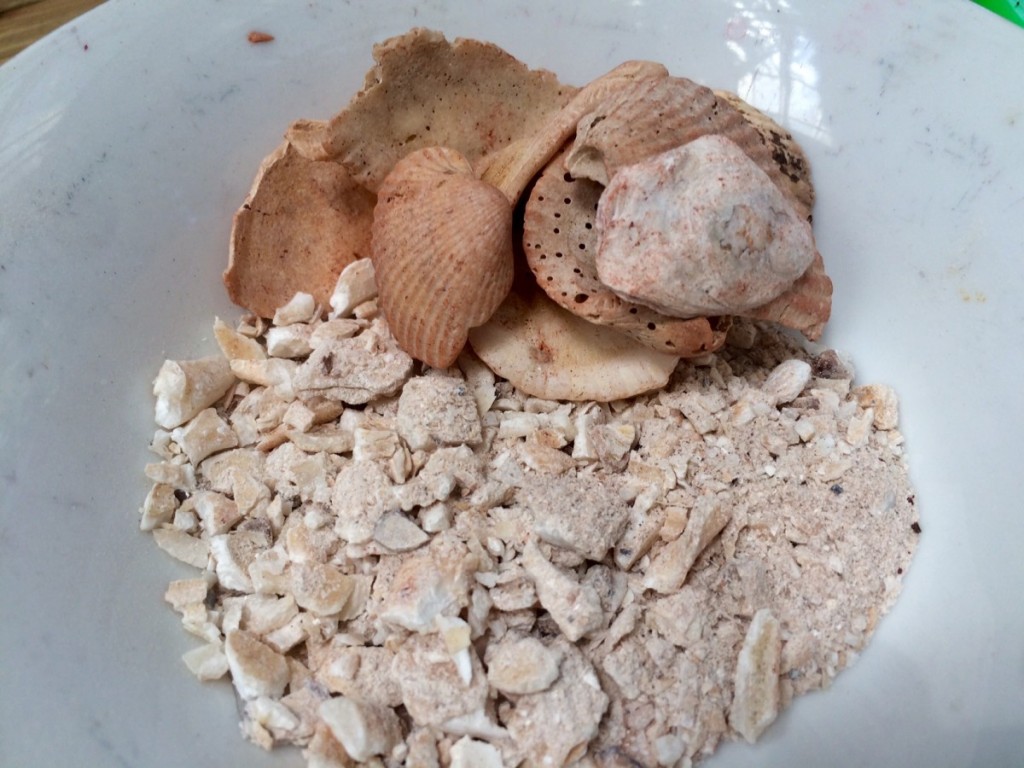image of students removing yolk. April 2016
Egg tempera paint is a really fun and easy way to make your own paints from all-natural ingredients. The great thing about egg tempera is that you can use almost anything to make pigment– from rocks and stones and shells to the fabulous Earth Pigments, which give you the world-variety of colors. Here is where I will usually mention that if you choose to grind your own pigments, it’s best to wear a mask and work in a ventilated space. Since Green School is wall-less, we usually don’t have problems with the latter!
In tempera paint, the egg acts as the binder, and will stick almost any pigment to many different surfaces. There are a few different recipes for egg tempera paint, a common one is to use a vinegar and water ratio to make a proper emulsion. But for the workshops that we’ve done here, we like to keep it to minimal ingredients: egg yolk, pigment, and water.
This is where it starts to sound like a cooking show. The first thing you’ll need to do is separate the yolk from the albumen. With the yolk in one hand, you will then pierce it to remove the membrane. This usually takes a few times, but everyone loves this ooey-gooey part. The reason we want the membrane out is that it’s a different consistency than the yolk, and will make variations in the paint color. A fine artist may not want that, but for a kids workshop, it’s alright.
Once you have the yolk, you can divide it depending on how many colors you want to make and how much paint you will need for your project. All pigments have varying molecular size, some are lightweight with a lot of air between the particles– these are ones that you may need to add more pigment to the mix. A good rule of thumb is to start with a 1:1 yolk:tempera, test it and see if it’s the consistency you want.
image of egg tempera workspace using Earth Pigments
After a bit of time, usually an hour or so, you will start to notice that the paint gets thicker and less easy to glide. This is because “egg yolk contains both lipids and proteins. As egg tempera paint cures, these components cross-link to form a polymeric network which adheres the colored pigments to the prepared surface. Water is simply a diluent which helps to wet the pigments, dilute the egg yolk to the proper strength/consistency, and facilitate application. More or less water may be added to different paints to alter their handling qualities and transparencies” (1)
One of the drawbacks of using egg tempera paint is that it spoils quickly. If you want to use the paint for more than one day, a couple drops of essential oil will act as a preservative and cover the smell. Also, if you’re wanting to make the exact same color from the pigments, it’s best if you document how much pigment was used, otherwise you’ll end up with two different colors.
That being said, once the tempera paint is used, it lasts a long, long time. Egg tempera paint dates back to the Egyptian era. Even with the advent of slow-drying oil paint, which allows the artist to get immaculate detail and precision, many artists from the Renaissance still chose to work with the fast-drying egg tempera. “It was during the early to mid Renaissance (approximately 1400-1450) that egg tempera achieved what is generally considered its greatest development. Italian artists were organized into guilds that taught a systematic, deliberate working method. This exacting technique, combined with great skill and careful craftsmanship, produced a masterful body of tempera paintings (as evidenced by the many Renaissance works in good to excellent condition to this day). Works by Fra Angelico, Mantegna, Ghirlandaio, and Botticelli are examples of this technical and artistic virtuosity” (2).
One discovery that we’ve had is that you can utilise the whole egg in the eco art studio:
- The yolk for paint
- The egg white acts as a glossy varnish that can be used on top of the paint (milk and water can also be used for this!)
- The egg shells, once dried, can be finely ground and used as a DIY white paint. Not 100% pure white, but it works! (note- the trick to grinding egg shells is to remove the mebrane inside the shell first)
image of student experiments using bamboo leaves as palettes!






Be First to Comment